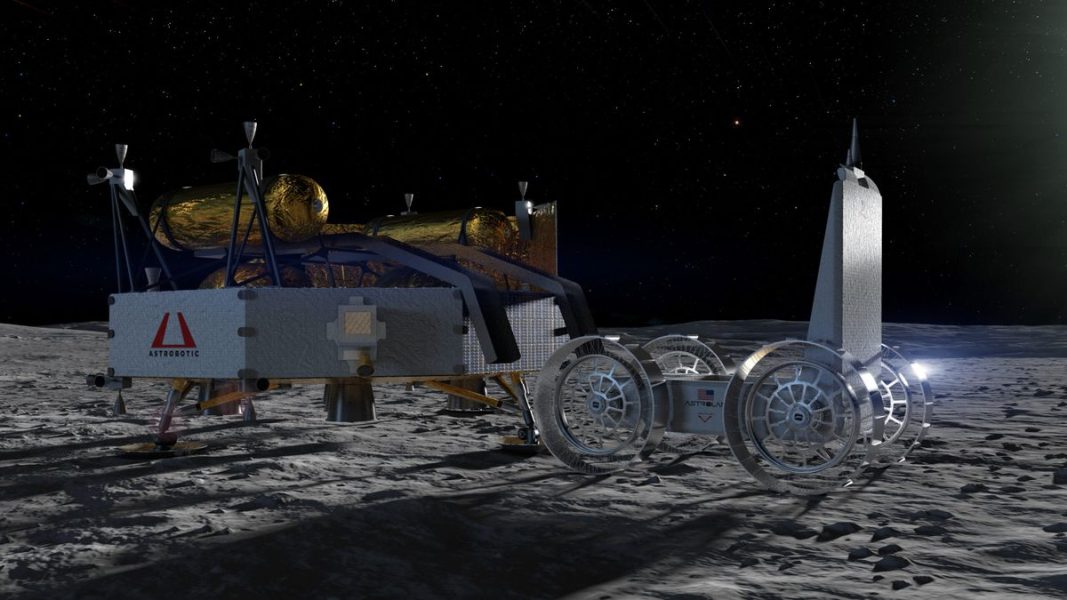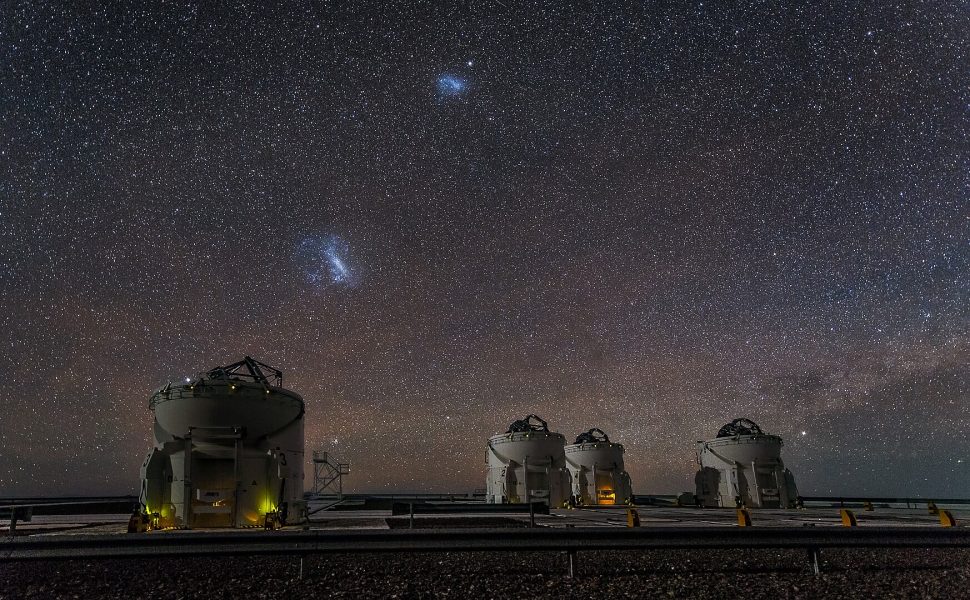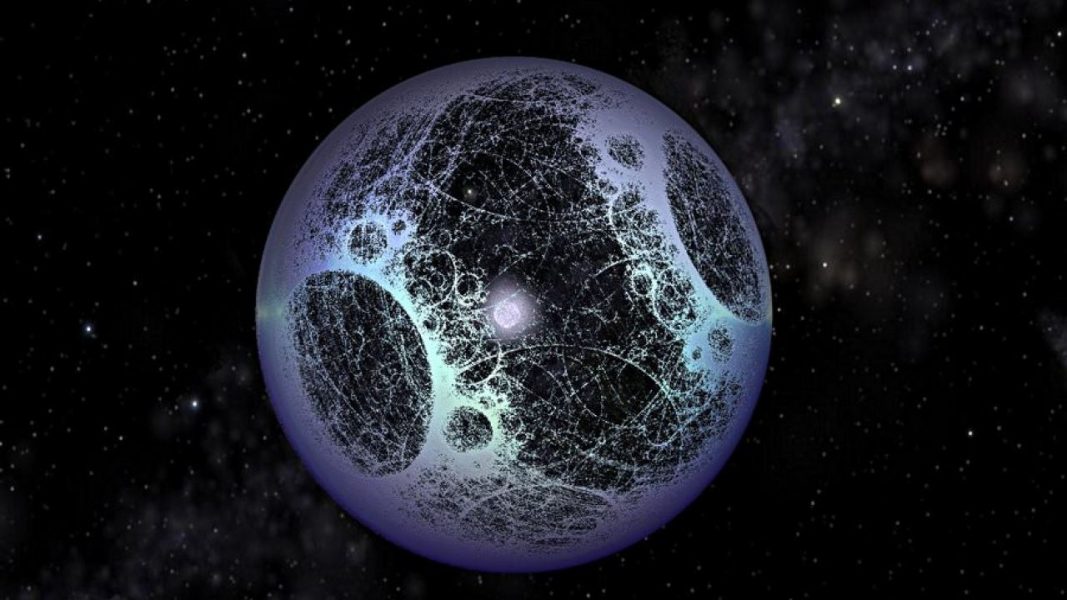Ask Ethan: What are the worst cosmic misnomers? – Big Think

Out there in the Universe, there are all sorts of fascinating objects, phenomena, and events that have been either predicted, theorized, or directly observed. Some of them are named rather intuitively, as we have no problem with names like star-forming region or stellar remnant. Others are named a little more poetically, like kugelblitz, which refers to a (theoretical) black hole formed from radiation alone, or syzygy, which is the alignment of three (or more) astronomical bodies. Still others are words that were derived from acronyms, with objects like quasars derived from the acronym QSRS: quasi-stellar radio sources. While astronomers are kind of notorious for concocting unnecessary acronyms (astronomer Glen Petitpas has created a Dumb Or Overly Forced Astronomical Acronym Site, or DOOFAAS database), we can go further, and look to astronomy names that are complete misnomers: named in such a way that the literal meaning of the words used to describe the object or phenomenon inaccurately represent what it actually is. That’s the inquiry of Patreon supporter Tim Graham, who was reading this recent article on the T Tauri system and was dismayed that the three members of the trinary star system weren’t named T Tauri A, T Tauri B, and T Tauri C, as standard astronomical convention would normally dictate. It led him to ask what seems like a simple question:“What are the worst misnomers in the cosmos?”Unfortunately, there are a great many names that have stuck and stood the test of time, even though we know they’re wildly inaccurate as far as describing their physical properties go. Here, at least according to me, are our nine worst offenders.9.) Milky WayAstronomy, in many ways, is the oldest science of all, as many of humanity’s discoveries related to the heavens predate written language. It makes sense that when people all over the world told stories about how things came to be, astronomy featured prominently in their mythologies, with tales of Gods and heroes frequently intertwining with what’s observed in the heavens.One such story, from Ancient Greece, was known as the milk of Hera. The Greek hero Heracles was the son of Zeus, but not with Zeus’s wife, the Goddess Hera, but with a human woman, Alcmene. Once Heracles was born, however, he would need to be suckled by Hera in order to receive honors in the afterlife. Although there are many variants (Zeus, Hermes, Athena, etc.) of who brought baby Heracles to Hera, and whether the suckling was consensual or whether Hera was asleep when it began, and whether it ceased because Hera awakened or because Heracles bit down too hard, the result was that her milk was sprayed across the heavens.As a result, this created what the Greeks called Γαλαξίας Κύκλος: literally the “Milky Circle.” Although countless other cultures have their own myths for the creation of the great expanse of our cosmic home in the Universe, we continue to call it the Milky Way, even though that idea is literally thousands of years out of date.8.) GalaxyIt was only in the 1920s that we discovered that many of those faint, fuzzy nebulae in the skies — spiral and elliptical nebulae, in particular — were not objects within our own Milky Way, but rather were well outside of it. Instead of being located within a few thousand light-years of our own location, these objects, initially dubbed “Island Universes,” were instead located hundreds of thousands, millions, or even tens of millions of light-years away. Swiftly, astronomers realized that these objects were much like our own Milky Way, except not a part of it at all: they were their own entities, gravitationally bound, consisting of enormous numbers of stars and other forms of matter.So why, then, did we go all the way back to the Greek roots of “Milky Way,” or Γαλαξίας Κύκλος (galaxias cyclos, to Romanize it), to call these objects “galaxies” instead of their original moniker: Island Universes? According to Joe Rao:“When we began to realize that there were other such vast congeries of stars, we called them “island universes,” but this was an obvious misnomer; since the word universe means everything there is, it can hardly have a plural. So we’ve settled on galaxies, which is a compromise as a new meaning for an old word.”However it got its name, it’s still a misnomer. While molecules such as alcohols have been frequently found in space, we have yet to find milk (or even milky sugars such as lactose) anywhere other than on Earth. For now, we’re stuck with this name.7.) Planetary nebulaThis dumb name for the nebula produced by a dying, Sun-like star comes solely because of one object in Earth’s skies: the Ring Nebula. Although we now know that the Ring Nebula itself is much more than merely a ring, its nature was unknown back when it was first spotted in 1779. Initially discovered by Charles Messier, it was independently rediscovered just weeks later by astronomer Antoine Darquier de Pellepoix, who described it as follows:“…as large as Jupiter and resembles a planet which is fading.”From that, astronomers coined the term planetary nebula, and have applied it not only to spheroidal nebulae that might also appear planet-like through a low-power telescope, like the Ghost of Jupiter Nebula, but to all Sun-like stars in the post-red giant phase of their lives, after they’ve blown off their outer layers and the central stellar remnant — a white dwarf — has heated up sufficiently to begin ionizing that blown-off material.Even though we know it has nothing to do with planets, and even though 80% of them exhibit no spheroidal shape at all (but rather the more common “dumbbell” or “bipolar” shape), we still call all such objects planetary nebulae, with objects in slightly earlier (pre-ionization) stages known now as the equally egregious preplanetary nebulae.6.) Cosmic microwave backgroundThis one annoys me, because we already had a better name for it that was in use for decades prior to the adoption of the current term: cosmic microwave background, or CMB for short. Way back when scientists were first attempting to puzzle out the origin of our Universe, there was the idea that the fact that we observed the Universe to be expanding today implied that it was smaller and denser in the past. Back in 1931, Belgian physicist Georges Lemaître was bold enough to suggest that we might consider extrapolating this all the way back to a singularity: to what he then called the primeval atom. The radiation dating back to that early stage, which ought to still persist today (although it would have cooled by now), would then be known as the primeval fireball.The most perfect blackbody ever created in this Universe, it currently, after billions of years of cosmic evolution, has a temperature of just 2.725 K, which peaks in the microwave portion of the electromagnetic spectrum. This wasn’t the case in the past, when it was peaked at higher energies; it won’t be the case in the future, when it will peak in radio wavelengths; and it isn’t confined to the microwave, but rather has infrared and radio components even today. And yet, the boring, less accurate term of “cosmic microwave background” has completely replaced the notion of the primeval fireball, leaving us all muttering the three letters that define yet another stultifying acronym in astronomy: CMB.5.) Shooting starNow we’ve gone and done it: we’ve moved past the “that’s a dumb name for this” stage and into the “that’s not even right” stage of the list. Many of us have marveled at the display of a meteor shower, catching streaks of light that flash across the sky, in brief a moment of brilliance, before fading away to never be seen again.It’s understandable that, way back before we knew what these objects were, we would’ve called them “shooting stars,” since they do appear point-of-light-like (i.e., star-like) in the sky, except fast-moving and streaky, rather than static and unchanging.But, as we’ve known since John Couch Adams discovered their origin back in the 1860s, these aren’t stars at all, but are merely small grain-like particles that broke off of a comet or asteroid long ago, and are speeding through Earth’s atmosphere as they burn up, which makes them visible. And yet, instead of “meteor streak,” or some other accurately descriptive name, we still call them shooting stars for no good reason at all. (I guess it makes this classic Sesame Street song sound better?) It’s all the more maddening because there are real shooting stars out there: hypervelocity stars that get gravitationally kicked so hard, they get ejected from their home galaxies. The star Mira, in our own backyard, is one amazing example, and yet, don’t call it a “shooting star” even though it actually is one, or people will think you mean a meteor streak!4.) Degenerate starsWhat do white dwarfs and neutron stars have in common? They’re both stellar remnants: the corpses of stars that have already died, with white dwarfs commonly produced by Sun-like stars that have blown off their outer layers and neutron stars produced in lower-mass core-collapse supernovae (the ones that won’t produce black holes). They’re also collapsed objects: objects made of matter — atoms in the case of white dwarfs, neutrons in the case of neutron stars — that aren’t producing any outward radiation pressure inside of them. Instead, to resist the inward pull of gravity, the only tool they have to push back is the quantum pressure arising from a special rule that governs all fermionic (spin-) particles: the Pauli exclusion principle.Unfortunately, instead of “Pauli stars” or “quantum remnants” or something poetic, we instead picked a very esoteric physics word to describe these stellar remnants: degenerate stars. In physics, degenerate matter is a state of matter where all the allowable energy levels are occupied, and where the Pauli exclusion principle significantly alters the properties of that matter. Unfortunately, degenerate has another common, far more popular meaning, and white dwarfs and neutron stars did nothing to deserve such an unceremonious association. You would think that being able to hold yourself up against gravitational collapse would be a good thing; perhaps someday, we’ll get a better name for these objects.3.) Big BangImagine if we called the day used to mark the founding of the United States “Treason Day” instead of Independence Day. You’d be quite upset that we used a term that only a detractor of our nation’s very existence would use: something you might expect the nation we rebelled against to have called it nearly 250 years ago, rather than something we’d call it ourselves.And yet, that’s exactly what we’ve done with the Big Bang: we’ve adopted the derogatory name that the most notorious and vociferous lifelong opponent of the theory — Fred Hoyle — gave to it while embarking on a tirade against it.What’s worse: the Big Bang isn’t even an accurate description of what happened. It wasn’t a bang, and nothing went “bang” in the process. Today, we know that the hot Big Bang wasn’t even the ultimate beginning of our Universe, but is rather only the aftermath of a predecessor state known as cosmic inflation. It’s arguable that the name “Big Bang” itself is the cause of many misconceptions, as many people look at the Big Bang as some sort of creation event, rather than what it actually is: a collection of conditions (hot, dense, nearly perfectly uniform, rapidly expanding, filled with matter-and-energy, etc.) that were present in the early Universe. Almost any other name would be better for it: the expansion hypothesis, the stretching Universe, even the original primeval atom is superior. But, as Fred Hoyle himself noted in an interview back in 1995, “Words are like harpoons, once they go in, they are very difficult to pull out.” Alas, here we are.2.) Dark matterBack in the 1930s, astronomer Fritz Zwicky was measuring the relative speeds of galaxies within the Coma Cluster, and noticed something odd. These galaxies were zipping around at incredible speeds: thousands of kilometers per second, or around 1% the speed of light, relative to the center of the cluster. And yet, if you added up all the mass of all the stars within all those galaxies, there was so little of it that those speeds should be enough to gravitationally unbind the galaxy cluster itself. But galaxies don’t just get kicked out of clusters, so there must be some kind of unseen mass holding them together. He called that mass dunkle materie, which translates to “dark matter,” understandably.But this isn’t matter that’s “dark,” as “dark” stuff absorbs light. What this type of mass would be is something that didn’t interact with light at all: didn’t emit it, didn’t absorb it, didn’t reflect it, etc. Many have noticed this over the decades, and have proposed changing the name of dark matter to:They’d all make a lot more sense than dark matter, because it isn’t “dark” in any way; it’s only detectable, to date at least, from its gravitational effects. Credit: Naskies/Wikimedia Commons1.) Dark Doodad NebulaWhenever you have a molecular cloud that’s sufficiently dense, it’s going to block the visible light emitted from objects behind it along its line of sight. Here in our Milky Way, many such molecular clouds are visible across the plane of our galaxy, including toward the galactic center. However, way down in the southern hemisphere, less than 20 degrees from the south celestial pole, an officially unnamed long, thin molecular cloud, also known as a dark nebula (which really is dark), stretches for three degrees across the sky. Without an official name, we have only its popular name to refer to it by, given to it back in 1986: the Dark Doodad Nebula.Seriously, we have an object in our night sky, a huge one that’s six times as lengthy as the diameter of the full Moon, that we call “the Dark Doodad Nebula” as though there were no better names for it at all. We went from naming things after actually descriptive nouns pinwheel, whirlpool, cigar, coalsack, etc. to naming them the equivalent of “Nebula McNebulaface.”There are plenty of other offenders out there that don’t describe what an object is well at all, but at least, for almost all of them, we can argue, “Well, they tried.” As colossally dumb as this name is, however, at least it has one thing going for it that dark matter doesn’t: the Dark Doodad Nebula actually is dark!Send in your Ask Ethan questions to startswithabang at gmail dot com!
Source: https://bigthink.com/starts-with-a-bang/worst-cosmic-misnomers/






